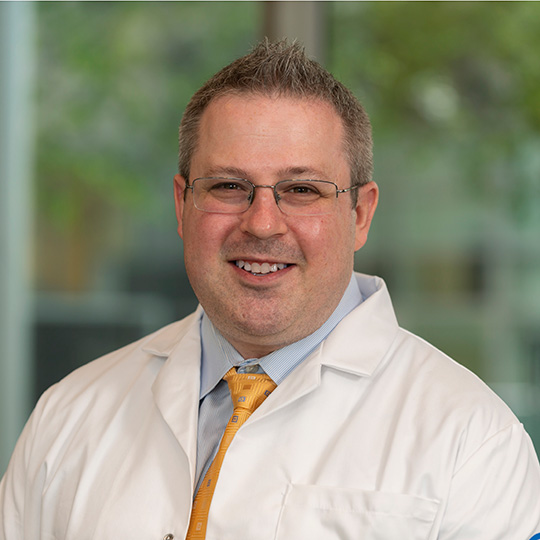Joseph Stember, M.D., Ph.D.

Forschungsübersicht
Early detection of cancer is crucial for improving patient outcomes and saving lives. Finding small brain tumors on MRI scans has the potential to significantly improve a patient’s treatment success and quality of life. However, these tiny tumors are often missed due to their subtle appearance and the overwhelming number of images radiologists need to review.
Our research aims to develop an advanced artificial intelligence (AI) system to help radiologists identify small brain tumors earlier and more accurately. We are developing a method that teaches AI to recognize what typical brain tissue looks like and flag anything unusual, like a potential tumor. By combining this with another powerful AI tool, we can also create detailed outlines of these tumors, helping doctors to measure their size, provide targeted treatment and track changes over time.
This system will serve as a “second set of eyes” for radiologists, reducing missed diagnoses and ensuring that patients receive timely, targeted treatment. By improving early detection, our work has the potential to lead to better outcomes, as well as longer, healthier lives for patients at risk of brain cancer.
My “Why”
Working as a neuroradiologist at a major cancer center, inspiration is everywhere. I am inspired every day by our cancer patients, who propel me to strive for new and innovative ways to diagnose and follow up on their cancer. Alongside clinical collaborators and other researchers, my ultimate goal is to make major strides in the fight against cancer. This aligns with my longstanding interest in quantitative and computational areas of investigation. With a doctorate degree in molecular dynamics simulation, I greatly enjoy combining computational AI research with a clinical focus on detecting and assessing changes in cancer.
Warum die Finanzierung wichtig ist
Funding [from the Prevent Cancer Foundation] will allow us to dedicate the necessary research time to gather and process data, as well as design, train and evaluate the neural networks. There is no substitute for having enough time to reach a high-level focus on crucial research tasks. Protected time becomes more essential as clinical workflows increase, particularly in diagnostic radiology.